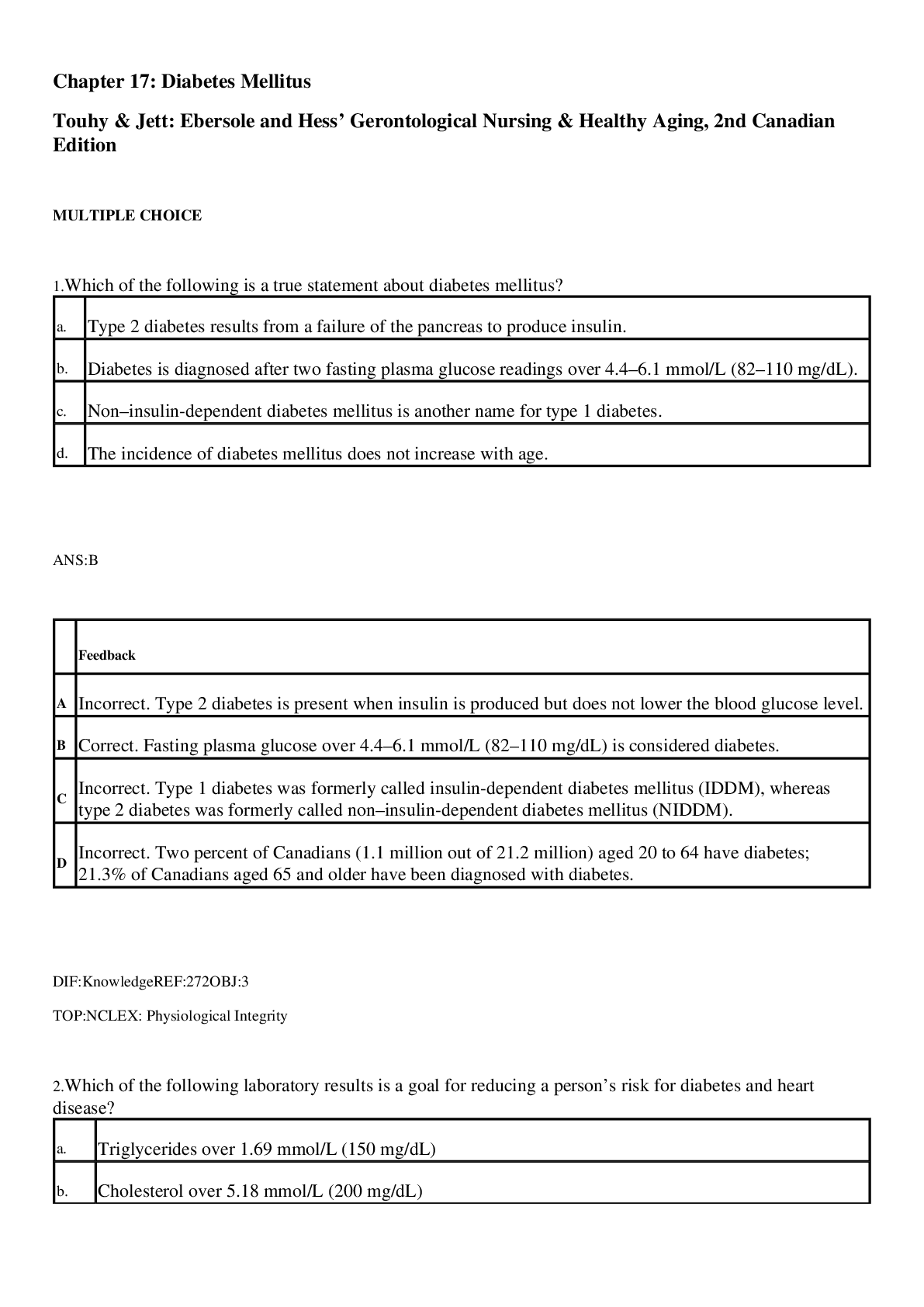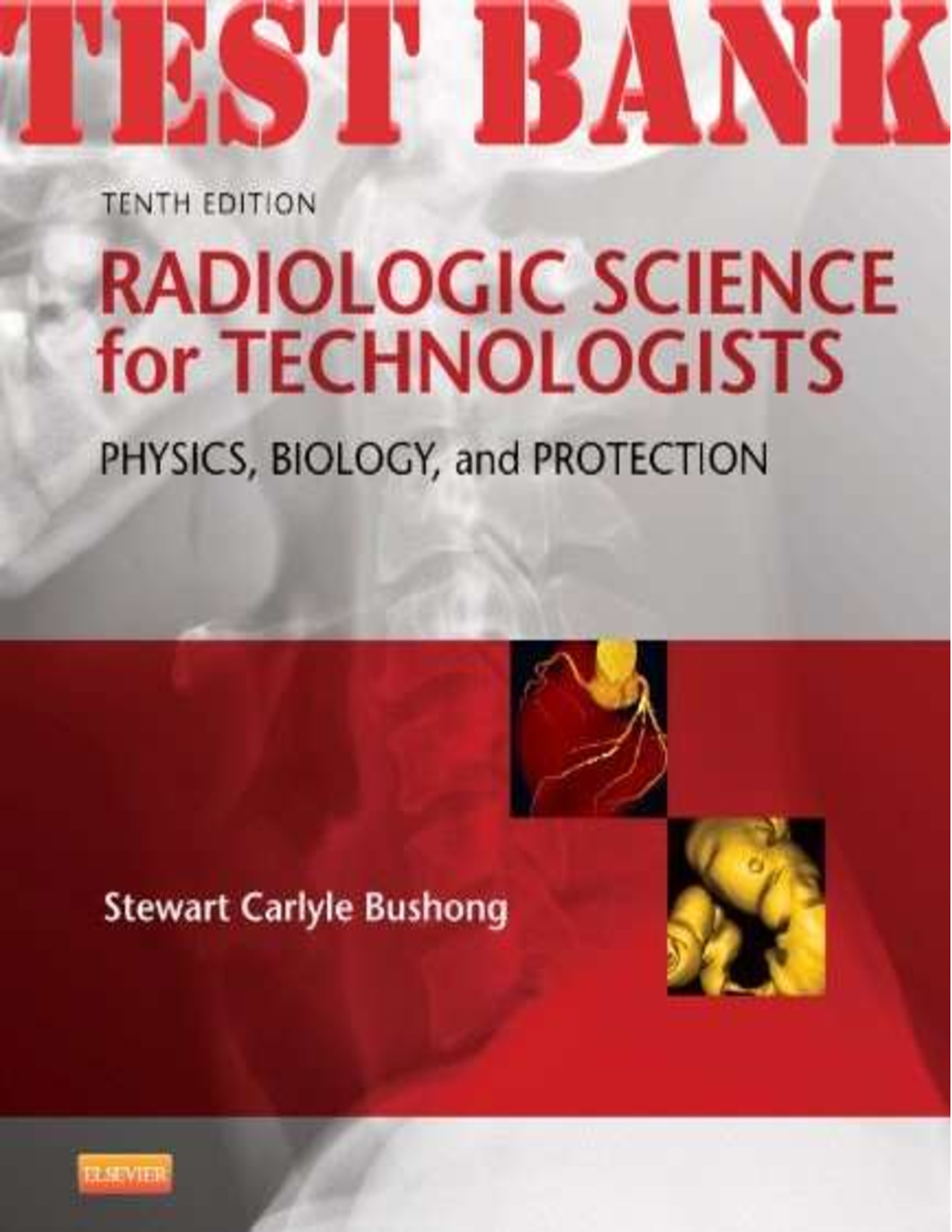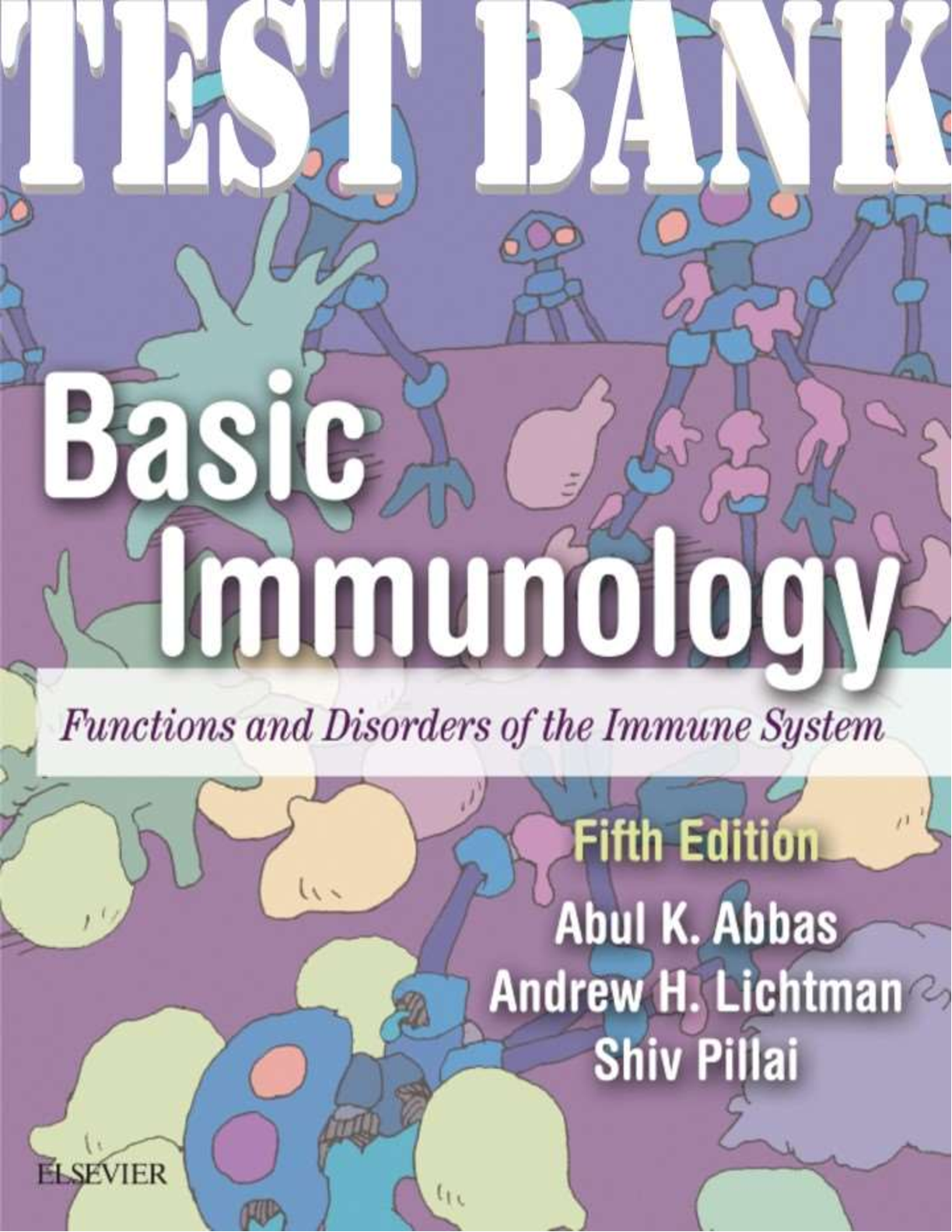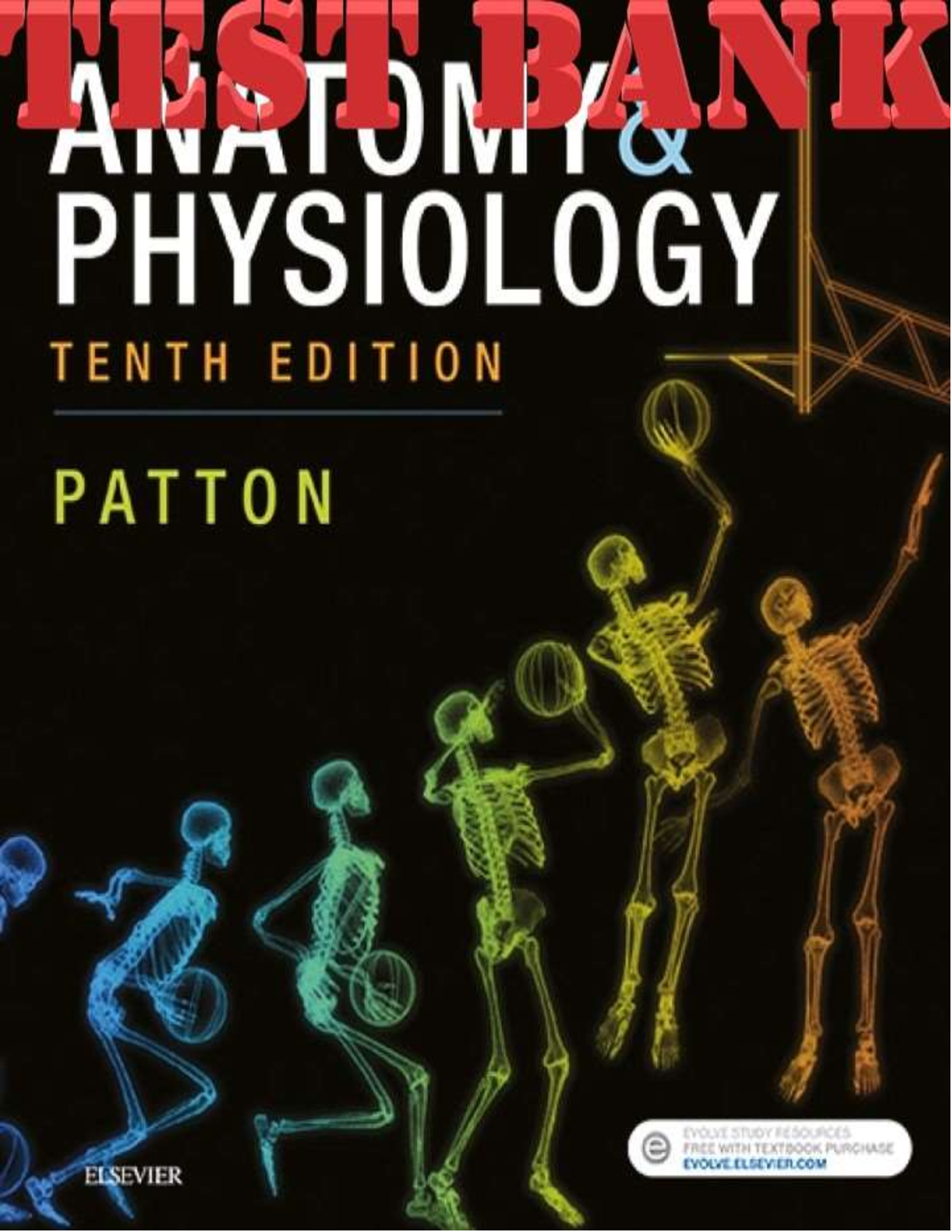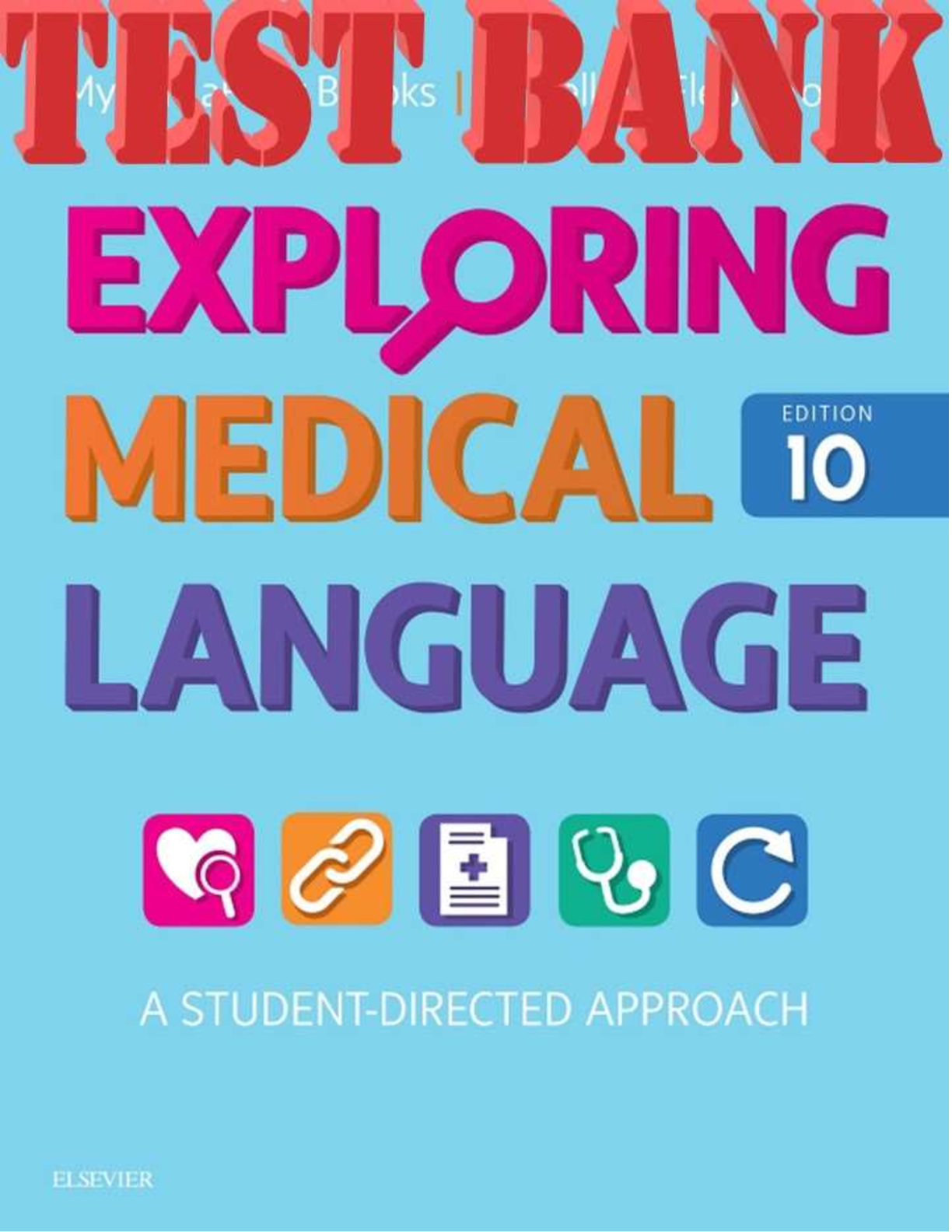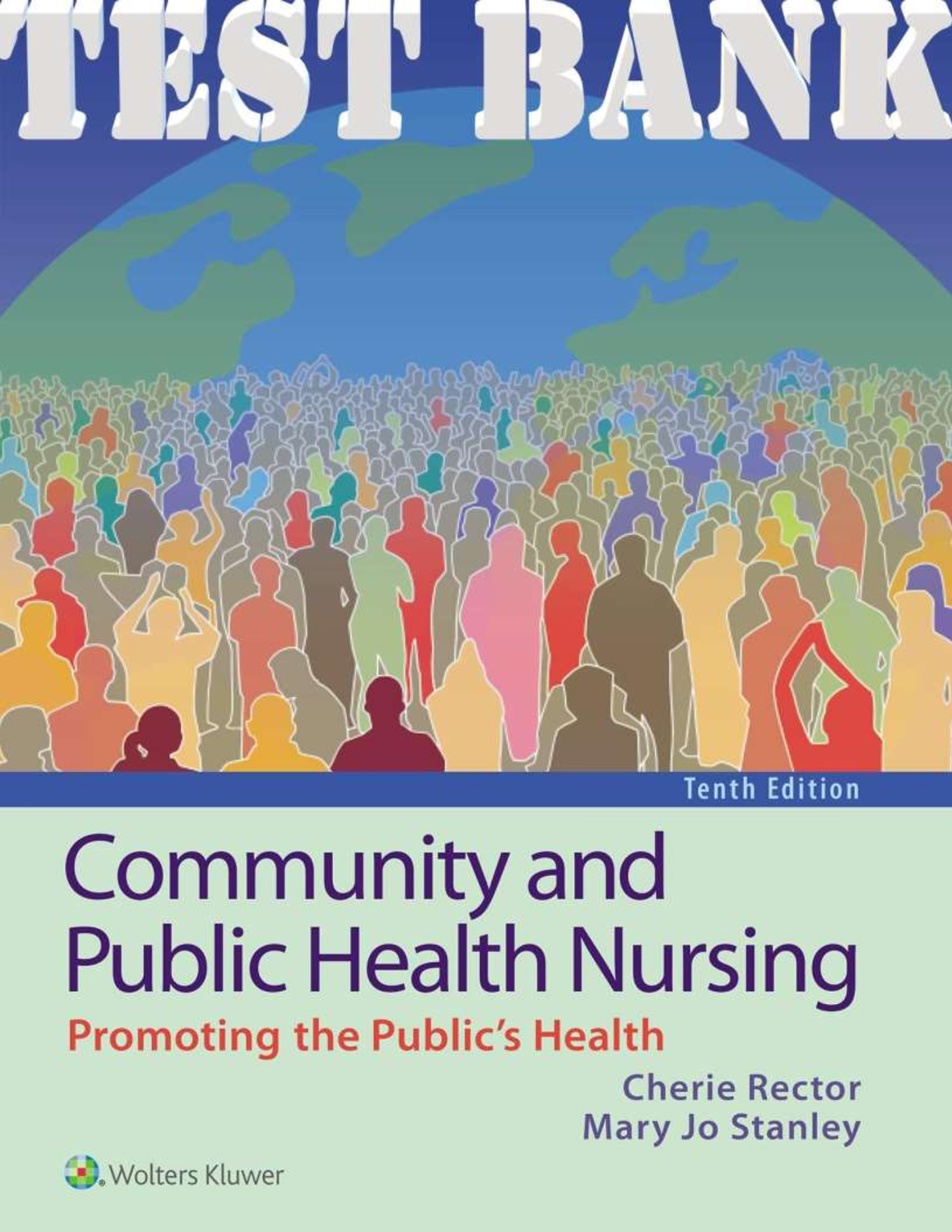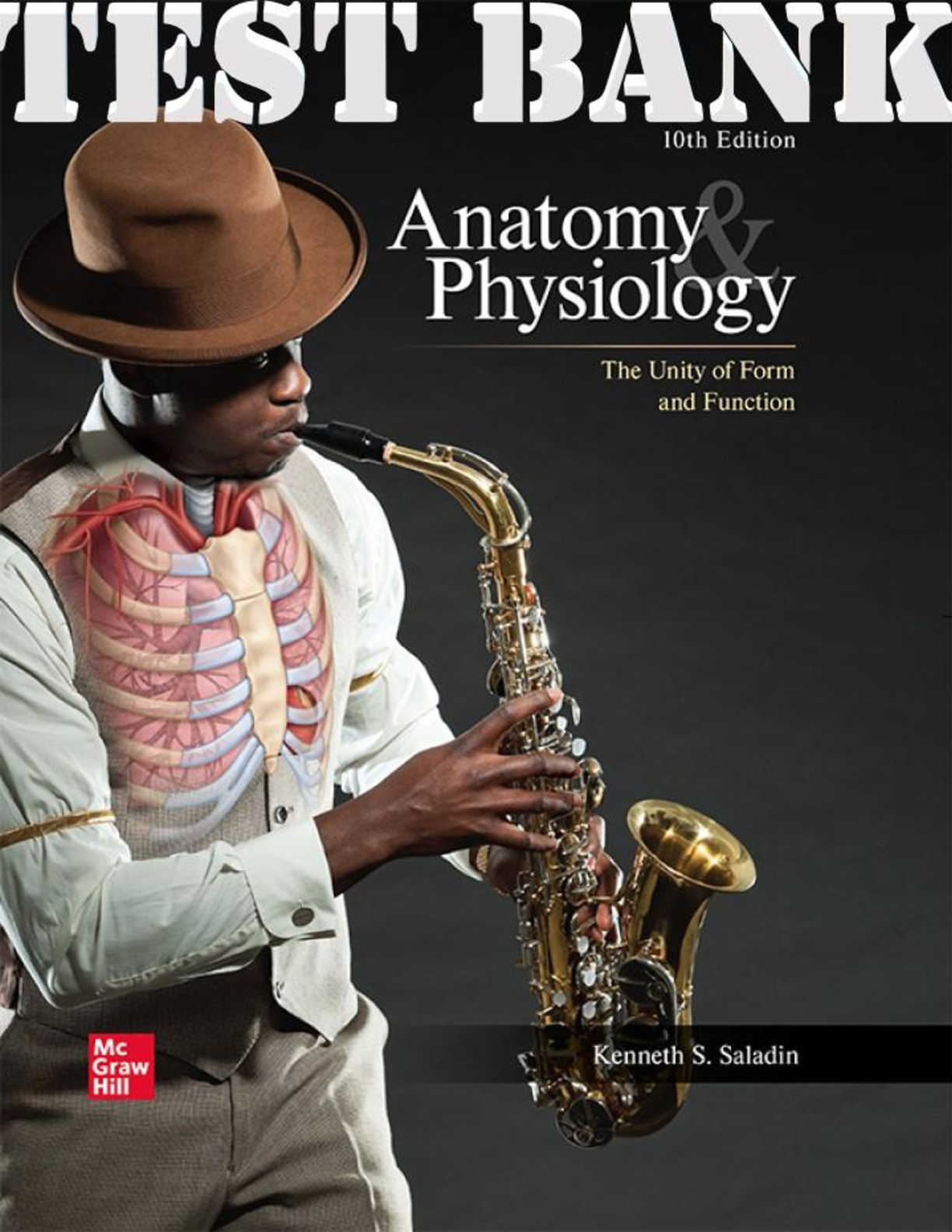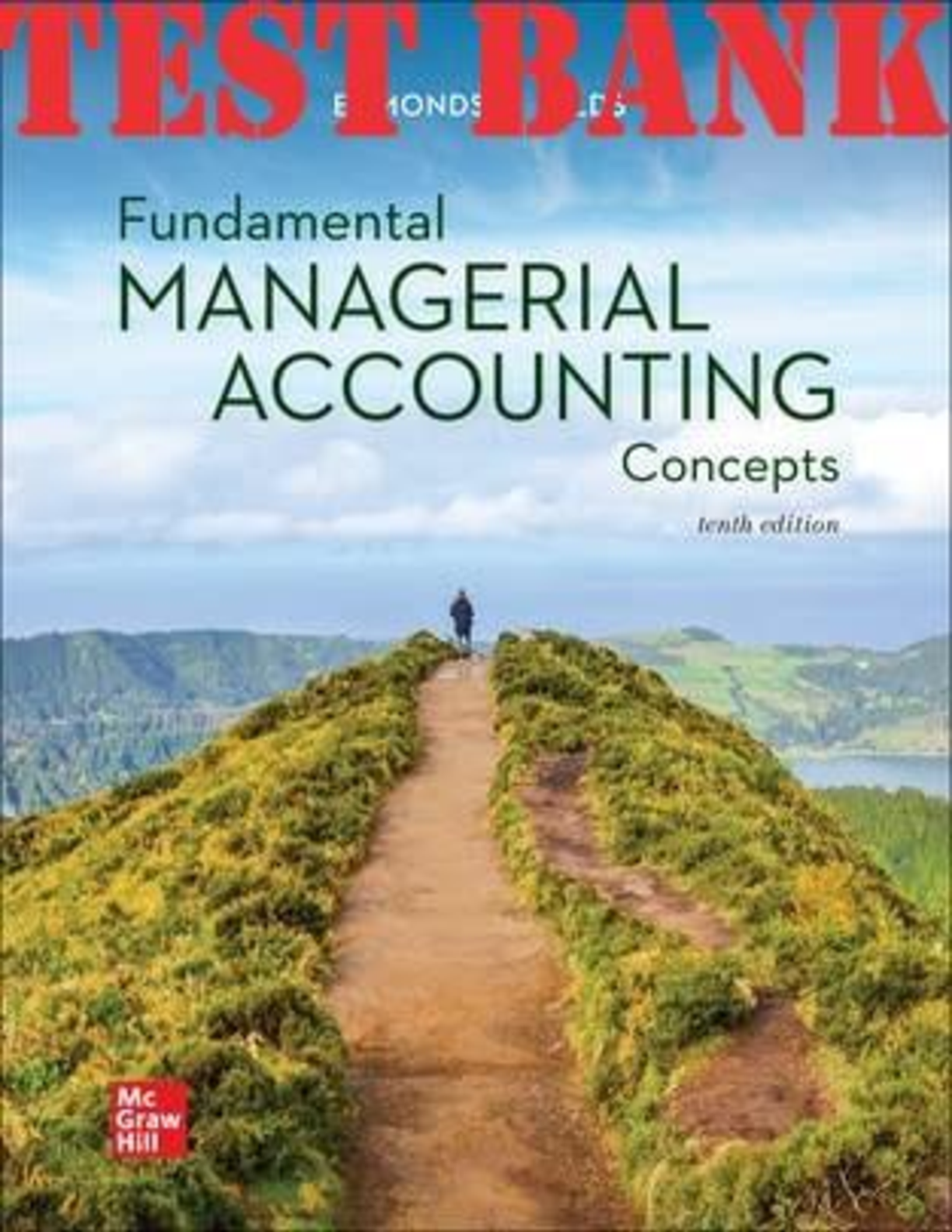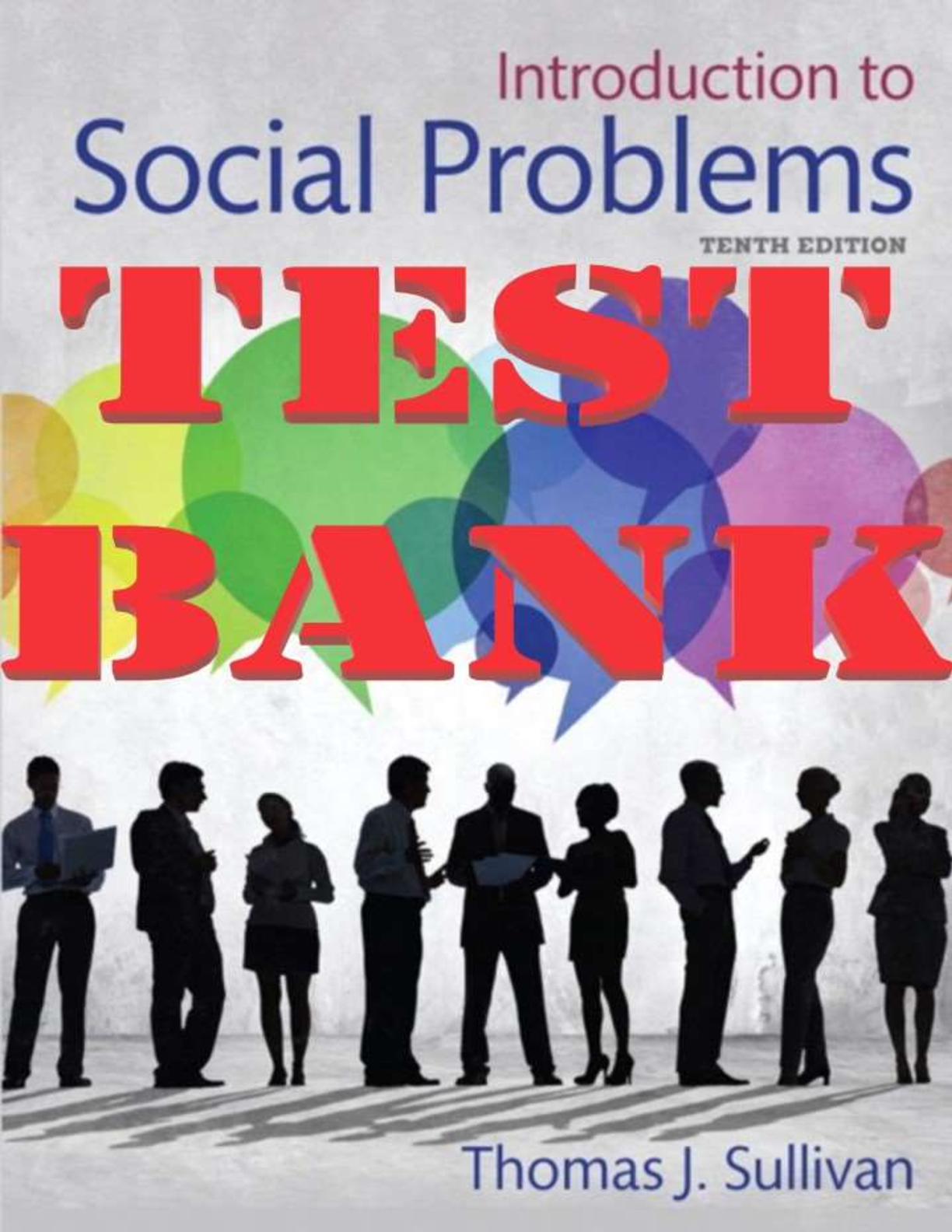*NURSING > TEST BANK > TEST BANK FOR PORTH’S PATHOPHYSIOLOGY 10TH EDITION BY NORRIS CHAPTER: Disorders of the Immune Resp (All)
TEST BANK FOR PORTH’S PATHOPHYSIOLOGY 10TH EDITION BY NORRIS CHAPTER: Disorders of the Immune Response
Document Content and Description Below
1. A 5-year-old child is experiencing itchy, watery eyes and an increased respiratory rate with some inspiratory wheezes. He has been outside playing in the yard and trees. The mother asks, “Why doe... s he get like this?” The health care worker's best response is: A) “This is what we call a type I hypersensitivity reaction and usually occurs a few minutes after exposure to his allergen. It is primarily caused by mast cells in his body.” B) “Because his allergy is related to something in his environment, the best thing you can do is try to keep him indoors as much as possible.” C) “This sounds like he is on his way to having an anaphylactic reaction and you need to get a prescription for an EpiPen to decrease his response to monocytes.” D) “This is pretty common in children. He is just getting used to all the allergens in the air. I suggest you just give him a shower after every time he plays outside.” Ans: A Feedback: The immediate response to allergen exposure is mast cell degranulation and release of mediators such as histamine and acetylcholine. Monocytes respond as part of the acute immune response. There is no truth to this being an anaphylactic reaction. Showers may help, but the underlying cause is the mast cell degranulation and the release of preformed mediators. 2. A child has experienced a “bee-sting” while at the park. The health care provider is walking by and notices the child has swelling around the eyes, lips, and face in general. What priority assessment should the nurse make at this time? A) Palpate for carotid pulses in the neck. B) Assess skin on the truck and back for development of hives. C) Assess and establish an open airway. D) Try to listen to breath sounds by placing your ear on the child's chest. Ans: C Feedback: The initial management of anaphylaxis focuses on the establishment of a stable airway and intravenous access and the administration of epinephrine. Epinephrine produces relaxation of bronchial smooth muscle and inhibits the immediate life-threatening cardiovascular effects of anaphylaxis. All the other assessments (pulse rate, skin, and breath sounds) can be done after the airway is assessed and managed. 3. The clinic nurse suspects the client is having a genetically determined hypersensitivity to common environmental allergens since the client is experiencing which of the following clinical manifestations? Select all that apply. A) Hives B) Runny nose C) Diarrhea D) Topical pustules E) Wheezes Ans: A, B, E Feedback: Localized, inherited allergic reactions mediated by IgE are known as atopic reactions, such as urticaria (hives). Atopic reactions are immediate (not delayed such as type IV poison ivy rash). Infections are not part of type I hypersensitivity. Autoimmune reactions are in response to antigens, not allergens. 4. A client with a long history of “hay fever” has recently begun a series of immunotherapy (allergy shots). This treatment potentially will achieve a therapeutic effect by: A) Blocking cytokine release from sensitized mast cells B) Preventing mast cells from becoming sensitized C) Causing T cells to be sequestered in the thymus for longer periods D) Stimulating production of IgG to combine with antigens Ans: D Feedback: In immunotherapy, injected antigens stimulate production of high levels of IgG, which acts as a blocking antibody by combining with the antigen before it can combine with the cell-bound IgE antibodies. This therapy does not block cytokine release, prevent mast cell sensitization, or change the maturation process of T cells. [Show More]
Last updated: 1 year ago
Preview 1 out of 13 pages
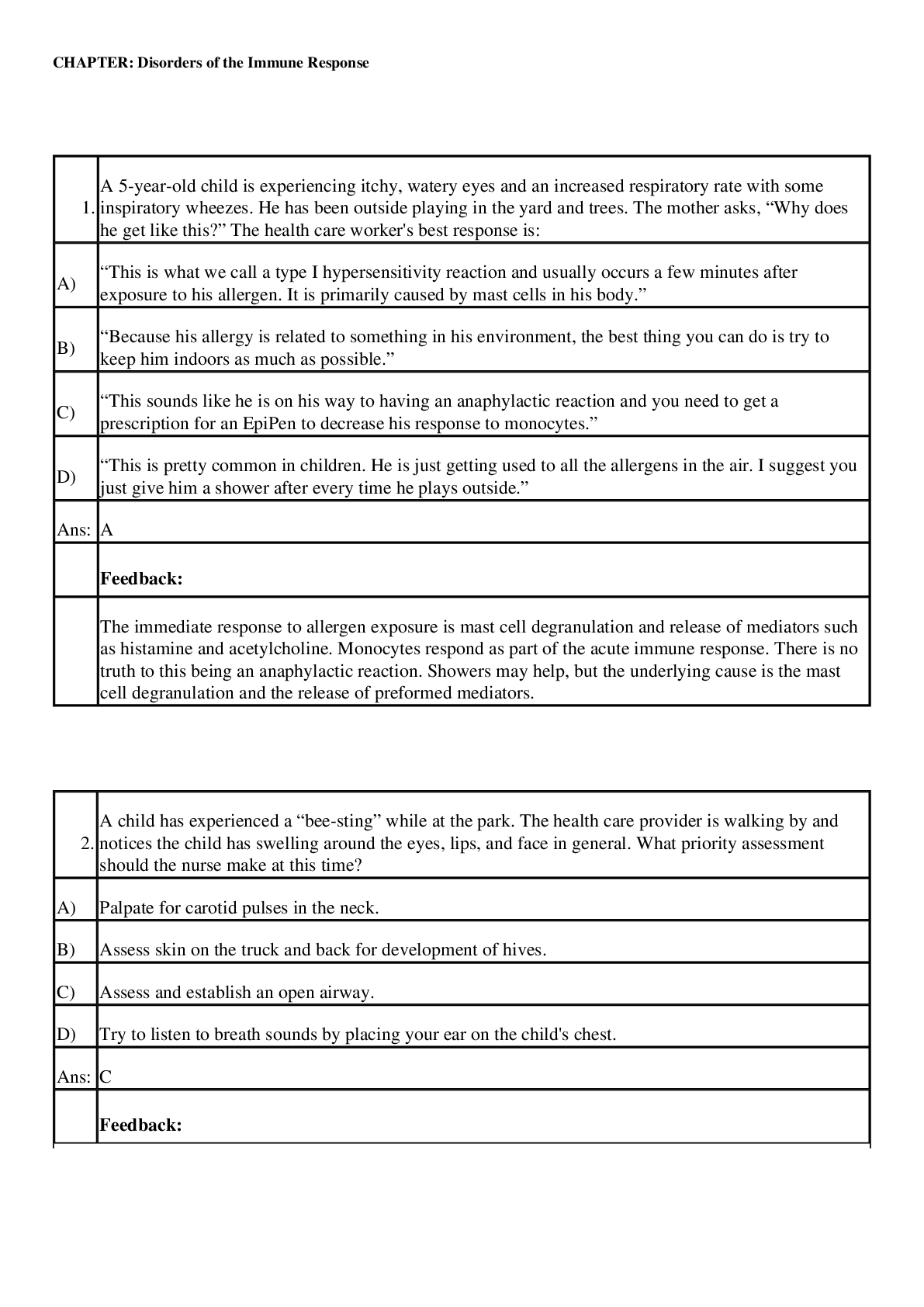
Buy this document to get the full access instantly
Instant Download Access after purchase
Add to cartInstant download
We Accept:

Also available in bundle (1)

TEST BANK FOR PORTH’S PATHOPHYSIOLOGY 10TH EDITION BY NORRIS ALL CHAPTERS
THIS PAPER CONSISTS OF ALL CHAPTERS
By GoldenA 3 years ago
$24
44
Reviews( 0 )
$4.50
Document information
Connected school, study & course
About the document
Uploaded On
Mar 01, 2021
Number of pages
13
Written in
Additional information
This document has been written for:
Uploaded
Mar 01, 2021
Downloads
0
Views
84


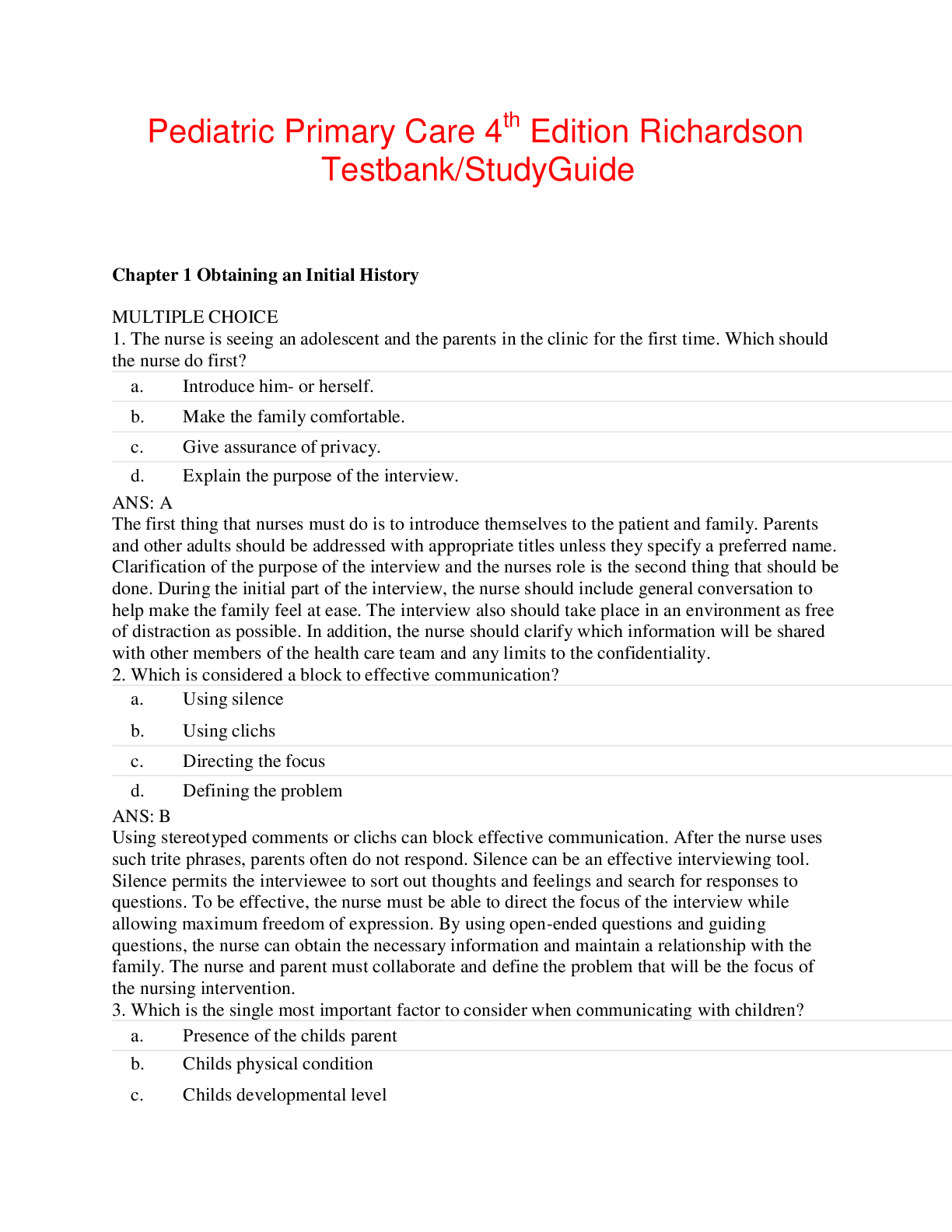

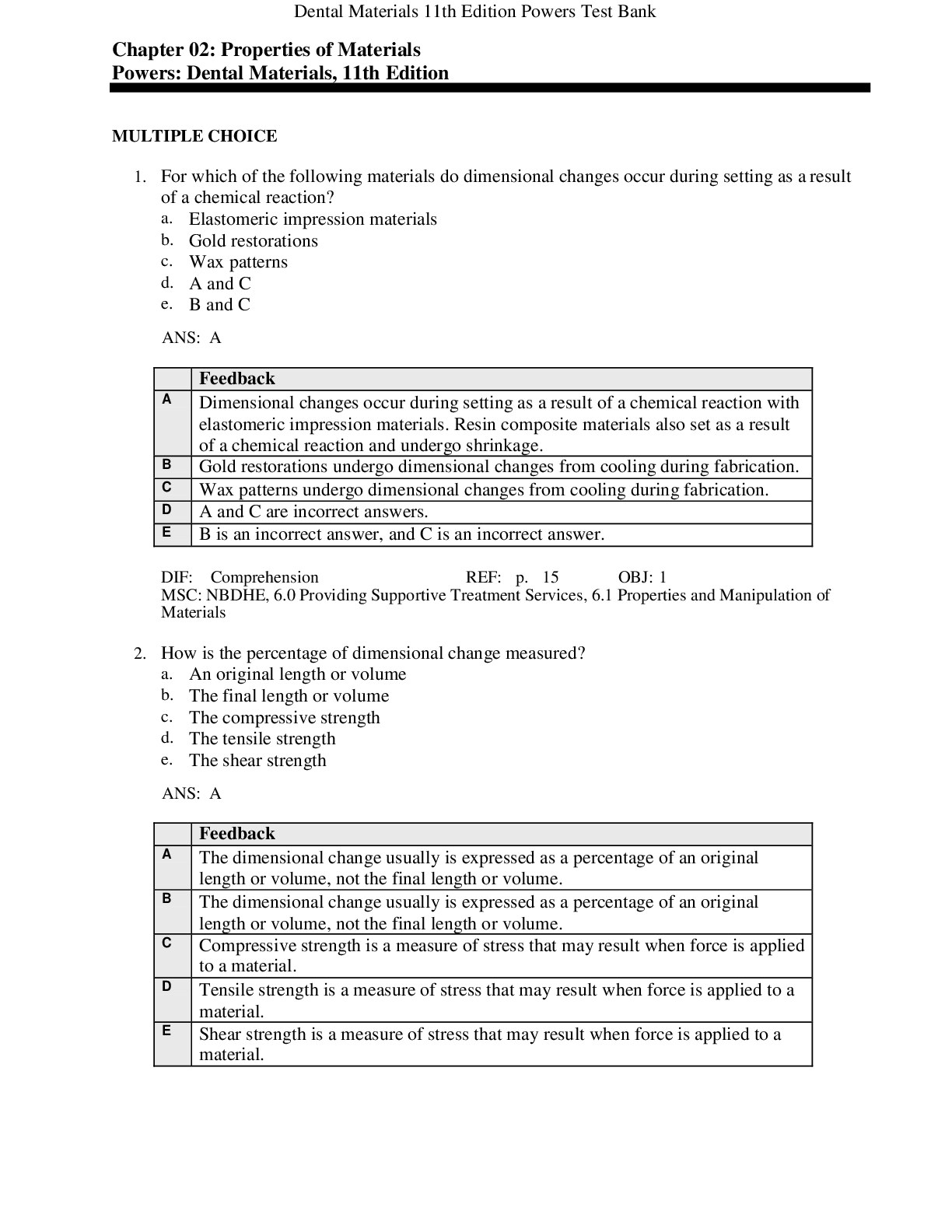
.png)
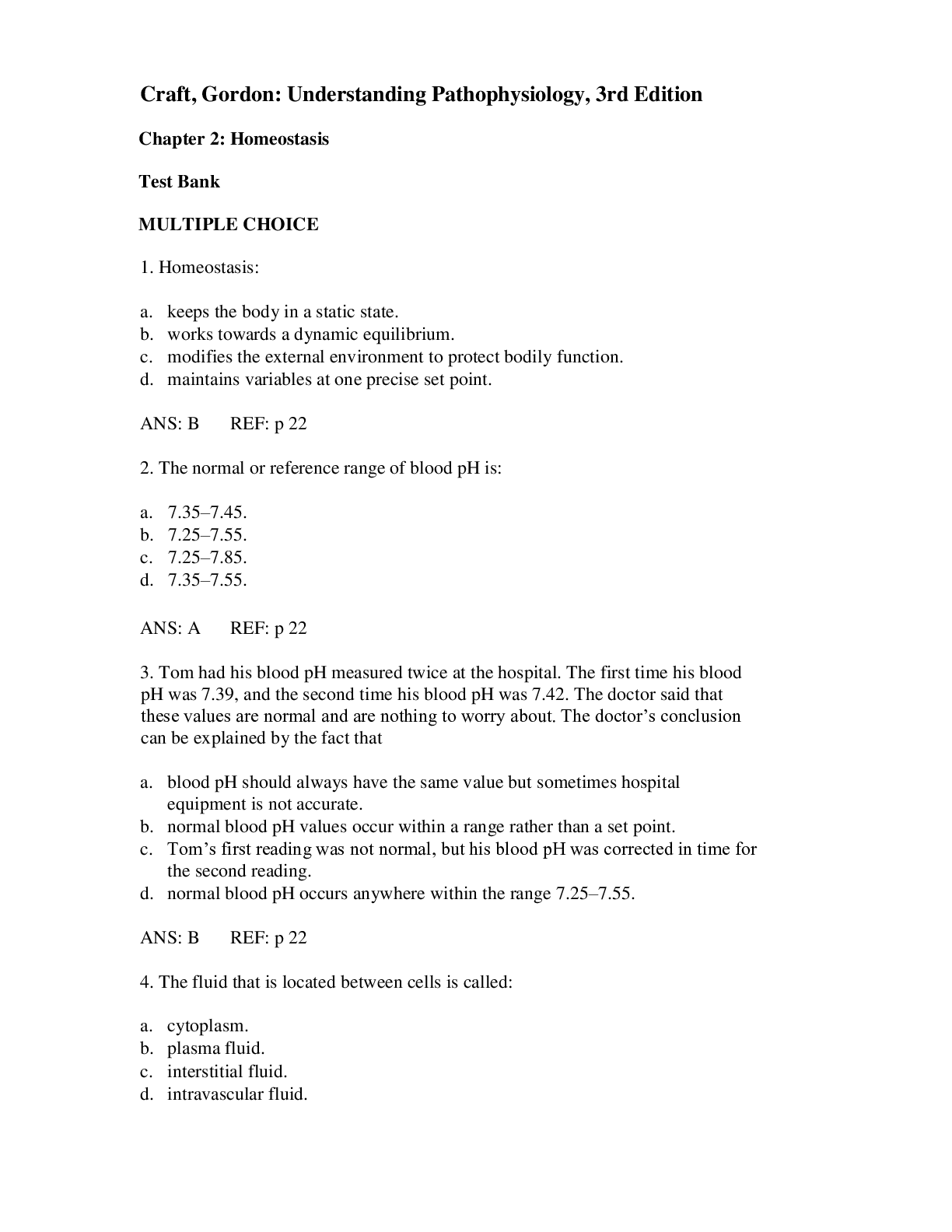



.png)
.png)
